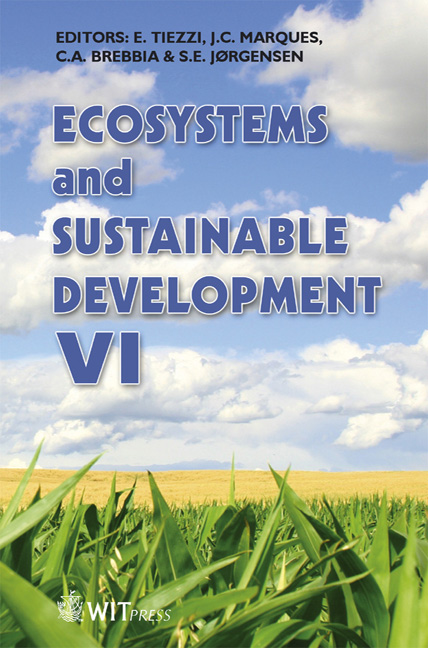Correlation Between The Moisture And Quantity Of Biomass As A Basis Of Sustainability Of Ecosystems (the Example Of Plain Deserts Of Turkmenistan)
Price
Free (open access)
Transaction
Volume
106
Pages
8
Published
2007
Size
253 kb
Paper DOI
10.2495/ECO070361
Copyright
WIT Press
Author(s)
V. Kostiukovsky
Abstract
The life activity and sustainability of ecosystems is determined by the correlation of all of their components, organic and non-organic. The correlation between moisture income and organic components in the authomorphic ecosystems of extra-arid plain deserts of Turkmenistan is examined. The area of 332 790 sq. km of authomorphic ecosystems of Turkmenistan receives an average annual precipitation of 36 740 billion metric tons. Nearly 8000–9000 bill. m.t. of this quantity is involved in ecological processes and guarantees the life, sustainability and activity of 242,42 bill. m.t. of plant biomass (phytomass) and 4,82 bill. m.t. of animal biomass (zoomass). Consequently the proportion of these three components, water, phytomass and zoomass, is 1171:50:1. This proportion supports the existence of desert ecosystems in Turkmenistan under the significant seasonal, annual and multi-century climatic fluctuations, and may be used for planning, monitoring and rational use of natural resources Keywords: Turkmenistan plain deserts, authomorphic ecosystems, correlation, moisture, biomass, phytomass, zoomass, sustainability. 1 Introduction Sustainability of ecosystems is determined by correlation of all of their components, organic and non-organic. Any change in any particular aspect initiates a chain of changes in all of the other ones. An example is the seasonal
Keywords
Turkmenistan plain deserts, authomorphic ecosystems, correlation, moisture, biomass, phytomass, zoomass, sustainability.





